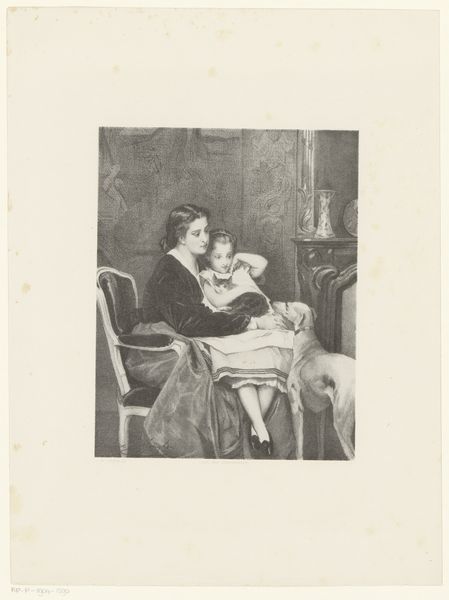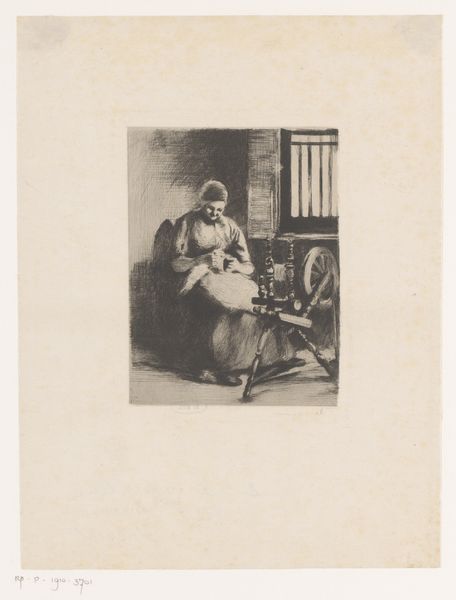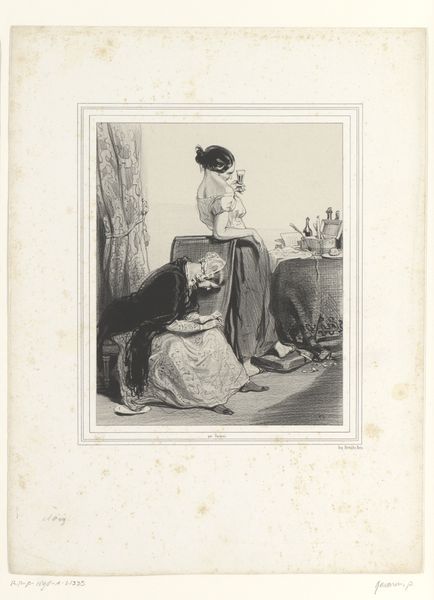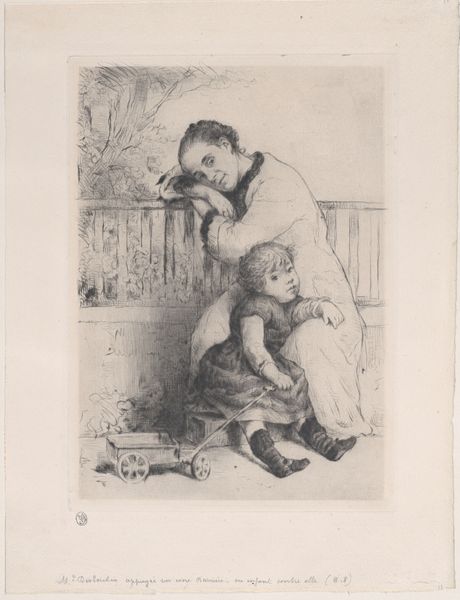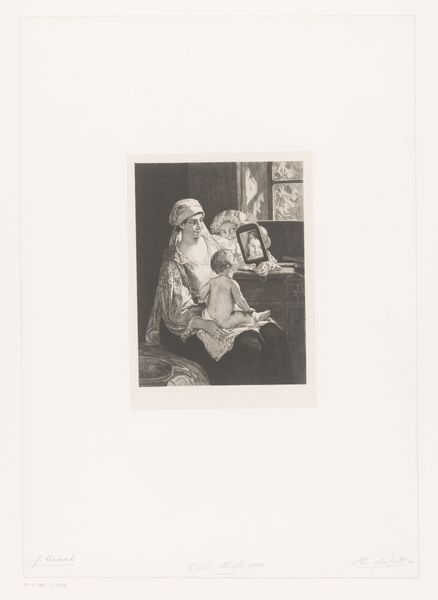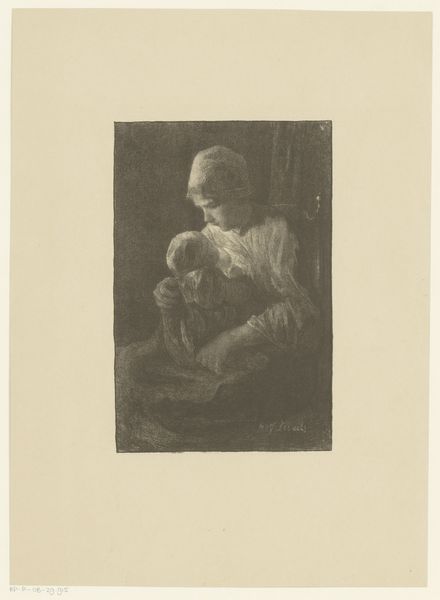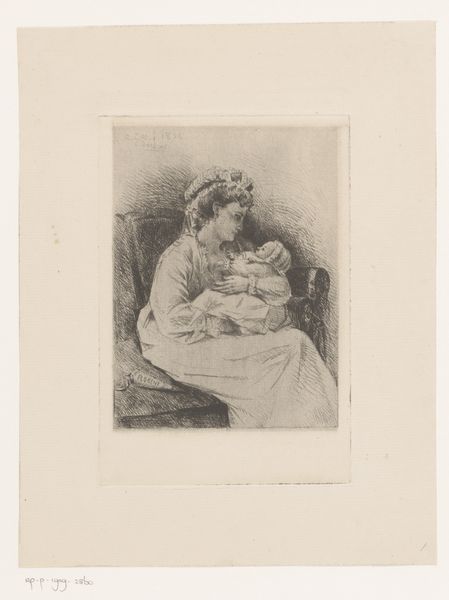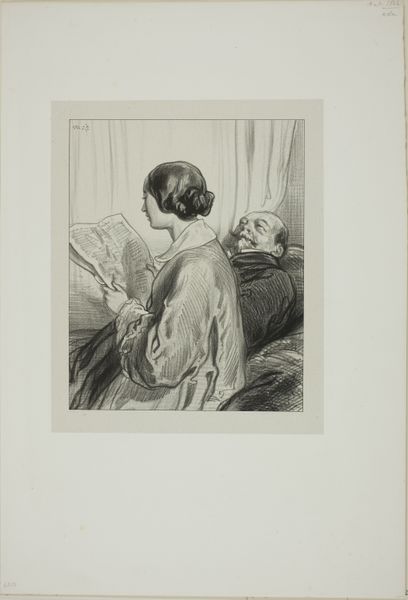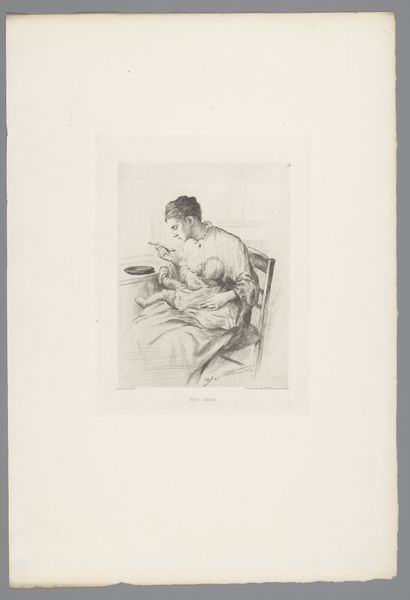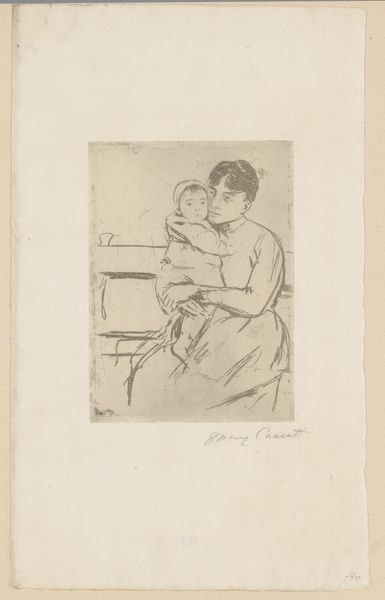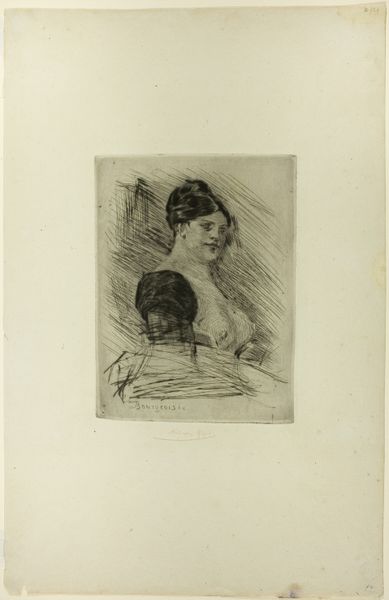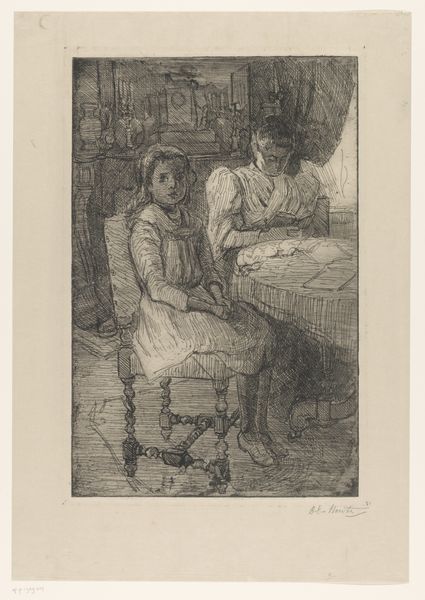
print, etching
#
pencil drawn
#
amateur sketch
#
light pencil work
# print
#
etching
#
pencil sketch
#
charcoal drawing
#
pencil drawing
#
pen-ink sketch
#
limited contrast and shading
#
pencil work
#
tonal art
Dimensions: 273 mm (height) x 172 mm (width) (billedmaal)
Curator: Let’s discuss Frants Henningsen's 1901 etching, "Moder og barn," which translates to "Mother and Child," currently residing here at the SMK. Editor: It immediately strikes me as incredibly tender, despite the somewhat stark quality of the etching. The shared moment feels almost sacred. Curator: The print medium itself, and the way Henningsen employs it, is very telling. The cross-hatching and varied line weights build depth, creating texture that you can almost feel. He emphasizes the soft drapery of her shawl, versus the texture in her child's patterned clothes. It speaks to the class and consumption of materials at the time. Editor: And think about the symbolism inherent in the book! It represents education, obviously, but also the passing down of knowledge and values from one generation to the next. The mother’s guiding hand points towards the page; this small, tender detail reinforces this transmission. And, let’s not forget, the pose is a classic Madonna and Child configuration, a powerful and recognizable symbol. Curator: Yes, and by rendering that sacred scene in an accessible medium like print, Henningsen is deliberately bringing it into the domestic sphere. Think of the relatively lower production cost versus a painting; this work could theoretically reach a broader audience, emphasizing the universality of that maternal bond. Also notice how his line work varies—at times delicate, almost hesitant, elsewhere quite assertive and dark. It gives us insight into his mark-making labor, his considerations of process. Editor: Absolutely. The subtle imperfections in the lines only enhance that sense of intimacy, I think. It resists idealization, reminding us of real human connections. You’re right; we're dealing with recognizable universal types elevated into something worthy of representation and analysis. Curator: Precisely. By paying attention to materials, we unveil its production and accessibility; seeing how Henningsen deliberately invokes these well-known motifs makes the image even more profound. Editor: Thinking about those embedded layers of meaning really deepens our appreciation of what could, at first glance, seem like a simple domestic scene. Curator: Yes, and it invites us to reflect on the changing social landscape that enabled these moments, like mother teaching her child, to find their way into fine art.
Comments
No comments
Be the first to comment and join the conversation on the ultimate creative platform.
